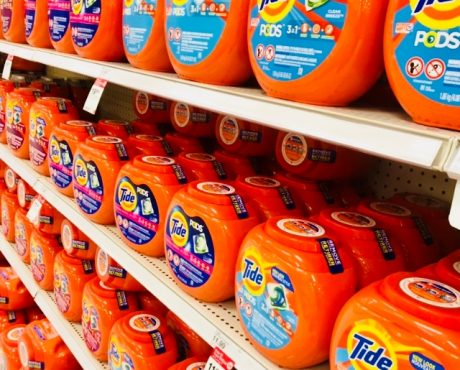Procter & Gamble Co Defying Coronavirus Pandemic
“Procter & Gamble Co (NYSE:PG) could produce growing dividends, not just for years or decades, but for generations to come.”
That’s what I told Automated Income subscribers back in April 2015. At the time, I said the consumer products giant was one of my favorite “Forever Assets,” an elite group of stocks that investors can own for the rest of their lives.
And that thesis, it seems, has played out as I had expected. Since I first covered Procter & Gamble Co back in 2015, the company has boosted its payout to investors on six occasions. Over that period, PG shares have posted a total return, including dividends, of 72%. Yet despite these impressive gains, this could be just the beginning.
Procter & Gamble can trace its roots back to a small soap and candle factory in 19th century Cincinnati. During the Civil War, the Union army awarded the company contracts to produce essential supplies. And over the following decades, Procter & Gamble quietly expanded its business empire, branching out into related products like toothpaste, laundry detergent, and razor blades. (Source: “A Company History,” Procter & Gamble Co, last accessed July 22, 2020.)
It’s not difficult to see why “Forever Assets” like P&G have stood the test of time. Even in recessions, people still buy Coca-Cola Co (NYSE:KO) soda or Clorox Co (NYSE:CLX) bleach. Moreover, these businesses have remained virtually unchanged for decades. In some cases, customers have enjoyed the same products for over 200 years.
This gives “Forever Assets” a big advantage over cool tech companies. Developing new products is exciting, but it’s expensive. Money spent on research and development leaves less cash to pay shareholders. And even the smartest, most innovative companies will stumble at some point. Just ask Nokia Corporation (NYSE:NOK) or BlackBerry Ltd (NYSE:BB) shareholders.
“Forever Assets” are different. They don’t innovate, but they really don’t have to. These boring companies can chug along for decades or centuries. And by compounding mediocre returns over long periods, these businesses can create an enormous amount of wealth for shareholders. That’s why “Forever Assets” like PepsiCo, Inc. (NASDAQ:PEP), Kimberly-Clark Corp (NYSE: KMB), and Hormel Foods Corp (NYSE:HRL) dominate the list of best-performing stocks of all time.
But here’s what sets Procter & Gamble Co apart from its peers. With about $70.0 billion in annual revenue, the company ranks as one of the largest businesses on the planet. That allows P&G to spread its fixed costs over a wider base of sales, resulting in some of the biggest profit margins in its industry.
Furthermore, the firm remains a trusted partner with distributors. Procter & Gamble’s brands continue to drive traffic to stores, given that management spends about $2.0 billion on marketing each year. And few retailers, moreover, will risk their business on an unproven supplier. This allows Procter & Gamble Co to command the best shelf space. And by extension, it allows P&G to make more sales.
You can see these duel advantages show up in the company’s financial results. In fiscal 2019, P&G’s gross margin topped 48.5%. (Source: “P&G Announces Fourth Quarter and Fiscal Year 2019 Results,” Procter & Gamble Co, July 30, 2019.)
And over the past decade, the company has earned an average of $0.12 in profit on every dollar that shareholders and bondholders invested into the business. I can only think of a handful of businesses in the world that can sustain that type of performance over such a long period.
Of course, the real test of a “Forever Asset” is how well it holds up during times of war, crisis, or uncertainty. That said, Procter & Gamble has boosted its distribution to shareholders for 60 consecutive years. And even through the recent COVID-19 pandemic, executives managed to increase sales.
If that weren’t enough, look how P&G shares have performed over the past few decades, especially when you compare it with the broader S&P 500.
Chart courtesy of StockCharts.com
Since 1968, the S&P has posted a more-than-respectable return of 3,080%. But over the same period, P&G posted a gain of 14,400%. That blows the broader stock market out of the water.
Of course, you have no sure things when it comes to investing. But I expect that Procter & Gamble Co will continue to deliver solid results through good times and bad.
